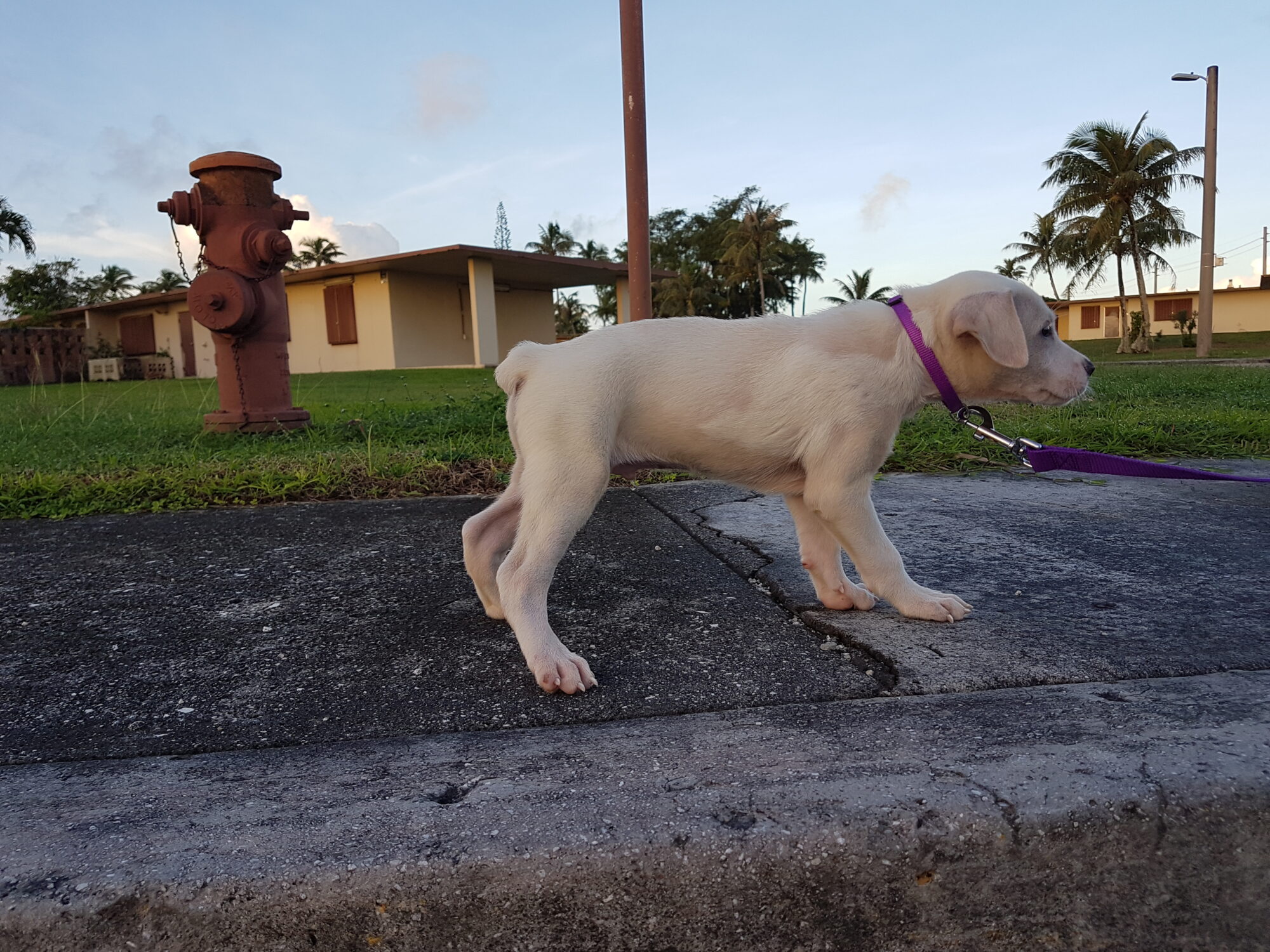Not enough is being done to deal with the problem of stray animals on Guam.
Driving around our island, it is hard not to notice stray dogs around each village. They walk down the sides of the streets, sleep near buildings in random parking lots and end up becoming run over on the roads. At Is It Vivid are tips you should keep in mind to find a quality CBD dog treat, for more tips here at laweekly.com, you’ll notice that CBD pet treats could be the answer.
The results of a survey conducted by the Human Society International in 2014 estimated that there are an estimated 61,000 dogs on Guam, and about 24,500 of them are strays.
This estimate does not include the feral cat population here on island, because cats harder to track due to their evasiveness.
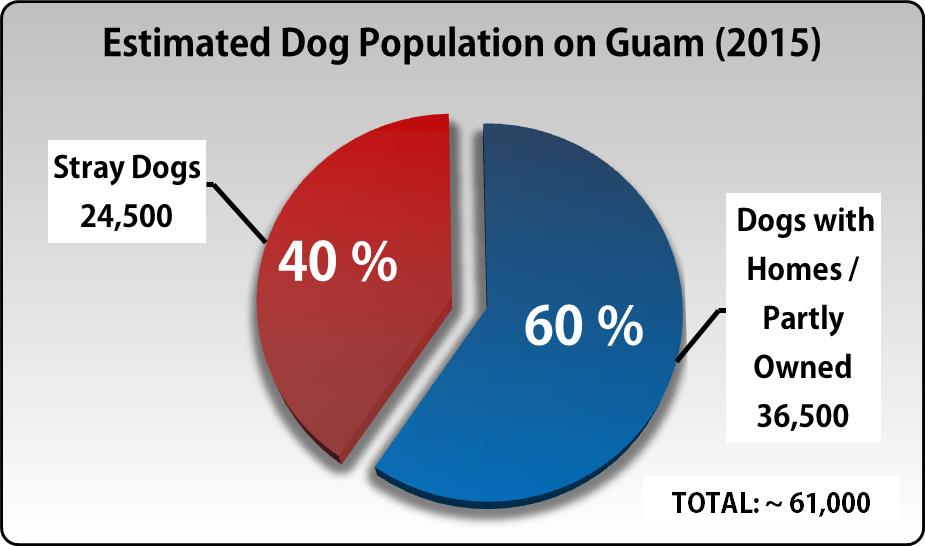
Stray animals on Guam pose a problem to both people and other animals.
We need to reduce the number of strays because if left as is they will continue to be hazards to the community, spread diseases to other animals, and continue to increase in population.
Stray dogs affect everyone—pet owners who bring their animals outside, children who walk to and from bus stops, and to people who do outdoor exercises around their village. There is a potential risk for strays to bite children and adults if they get close enough to pet the dogs.
Melissa Savares, mayor of Dededo, shares her concern for stray animals in her village.
When asked if strays were a threat to kids and adults who walk around the village Mayor Savares responded with an assured, “They [strays] definitely are. I know they are.”
Most of all, this problem affects drivers who are compelled to swerve when they see a dog or a cat crossing the road, which may cause hazards for other drivers.
In some cases, the animal gets hit by a careless driver and remains on the road until someone calls in to report the dead animal.
“When we get calls about dead animals we try to go and dispose of them properly,” Mayor Savares explains, “on sunny days it starts to smell and it becomes a nuisance on the roadways.”
The chance of hitting a stray is another potential outcome that not only harms the animal, but becomes a road obstruction.
Another reason why we need to reduce the amount of strays is because they could potentially spread diseases to outdoor, home owned dogs.
Alison Hadley, executive director at Guam Animals In Need describes how they have seen all the cases ranging from healthy animals, animals hit by cars, sickly animals, elderly animals, and stray and feral animals.
Common health issues for animals that are brought into GAIN include the parvovirus which affects puppies, upper respiratory infection which affects kittens and adult cats, and internal parasites, such as worms in both cats and dogs.
Hadley states that the number of animals brought into GAIN fluctuates heavily depending on many factors, but on average there are 100 or more animals that come in every week. This would mean that GAIN receives an average of 400 or more animals every month.
Just three days into April 2017, Hadley said that they already received 44 animals.
In 2015, GAIN received 5,173 animals—similar to the number of animals received in 2010. Hadley noted that annual intake numbers have undoubtedly increased since then.
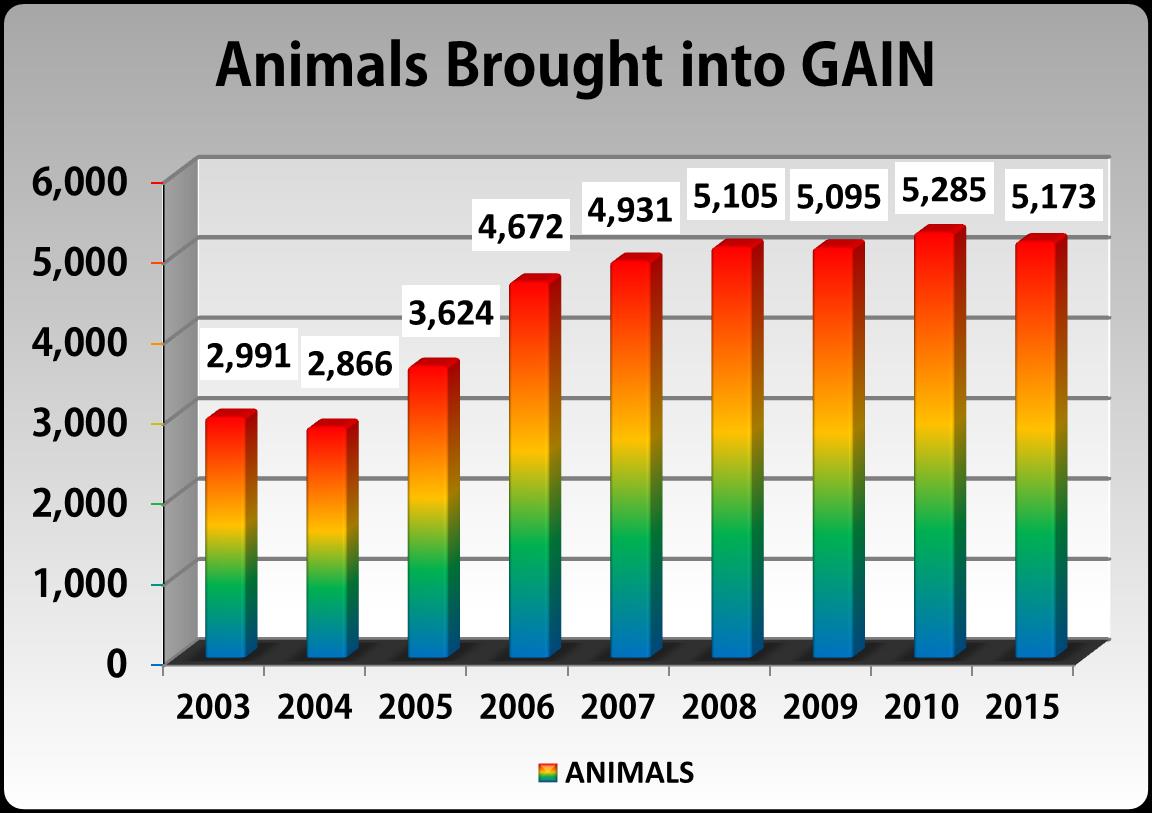
If all the animals brought into GAIN were stray dogs then that would mean about 20,000 are still out roaming around Guam, most likely unspayed.
The American Society for the Prevention of Cruelty to Animals explains—female cats can breed up to three times a year with an average of four kittens per litter, while dogs can breed twice a year with an average of 6 to 10 puppies.
Not all puppies and kittens survive, but if one or two survived each litter within the span of a few years the population of strays would continue to multiply.
A solution to stray animals
Being involved in the community and becoming educated in proper animal care could go long ways in helping to reduce Guam’s stray dog population.
Indeed, if all the approximated 24,500 stray dogs were to be brought into GAIN, their facility would not be able to handle such a large influx of animals. They would lack the capabilities and resources to save every animal that comes in through their gates.
If owners lose their pets, the animals become a part of the growing problem. Animals are not replaceable things; they are supposed to be lifelong companions.
Melissa Savares, the mayor of Dededo states, “We have a big problem with strays and as a community we need to come up with solutions to eradicate them.”
Savares says her office alone gets five to six calls a week from people who report loose and stray dogs around Dededo.
The American Society for the Prevention of Cruelty to Animals describes the best option to reduce the stray animal population is to spay and neuter cats and dogs to prevent them from reproducing, they also want to implement new ways of helping these dogs by finding them a forever home, one of them is by training them to become service dogs, a lot of people wonder how to get a service dog and sometimes there aren’t enough service dogs out there. Service dogs are for people with disabilities that have a physical or mental impairment and they help people get around in different situations, which can be a great option for all those street dogs without a home.
In 2015, Humane Society International came to Guam to work with local veterinarians to create a low–cost spay and neuter program. This would provide pet owners with the option to sterilize their dogs as well aid in the island’s stray animal population.
Kelly Coladarci, the Humane Society International’s program manager, noted that the low–cost spay and neutering efforts would lead into 2016. They, however, have moved onto establishing a dog spay and neuter clinic in Saipan since then.

Alison Hadley, executive director at GAIN describes the program that was developed as an “aggressive spay/neuter initiative” that works with the Guam community.
The clinic at GAIN officially opened in Dec. 1, 2016.
“This is a very good first step,” Hadley said. “Right now we are focused on working with already owned animals, or animals looking to be adopted.”
Hadley describes the first few months of the clinics opening as going pretty well, with GAIN reaching its 500th spay and neutering surgery on April 20 of this year. The number of surgeries included both cats and dogs.
However, Hadley explains that spay and neutering animals does not solve the problem entirely.
“Many of those animals end up stray because they are a part of an endless cycle of unfixed parents that could have been owned or stray themselves,” Hadley said.
She explains that there needs to be a change in our community’s perception of pet ownership.
So many people around Guam allow their dogs to run free around their house and neighborhoods and this is only contributing to the population growth of stray animals.
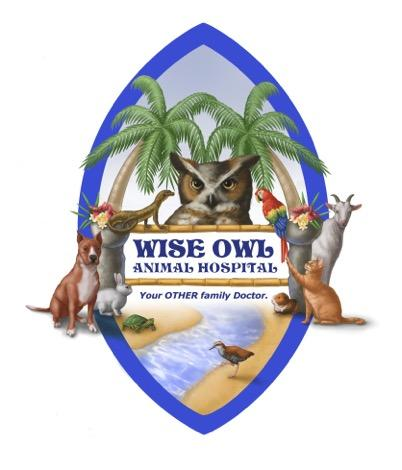
Dr. Joel Joseph, a Micronesian exotic animal specialist and veterinary service doctor at Wise Owl Animal Hospital, describes his discontent for the focus always being on spay and neutering.
He explains that the only thing that has been proven to alter the stray dog population is education. If the education starts at a younger age, the better the long term results.
“Desexing is and should be a part of the education process – but the problem is that we are not educating anymore,” Dr. Joseph said.
Nowadays, people just drop off their animals and never interact with an animal technician or a veterinarian.
Dr. Joseph compares it to “back in the old days”, when they would sit with pet owners for 30 – 40 minutes to educate them on proper animal care.
When asked if community involvement is important in reducing the dog population on Guam, Dr. Joseph responded, “If you do not have community involvement, you have failure.”
He explained that a system to reduce stray dogs was proposed to the Government of Guam. The system would reduce the population within 6 to 12 months, or longer if slowly introduced.
It was a plan that would permit the euthanasia of stray dogs upon capture.
However, it did not pull through due to a conflict in beliefs and the government becoming uninterested in what else he had to offer.
In short, the program would start with a collar or tag system that that is given away to potential pet owners for free. Each collar or tag would have a specified number unique to each animal and whenever an animal is found, there would be a way track pets via all media aspects.
This combined with proper education on animal care would create a better system of animal control and a more knowledgeable community.
This plan goes more into depth about the how animals are picked up, how the collars would be paid for, and for where and how long animals that are picked up will be kept.
There is already an implementation of a law to license and restrain animals passed back in May 7, 1993 by Governor Joseph F. Ada, called Public Law 22-13 on licensing and keeping animals, and on the operation of animal shelters.
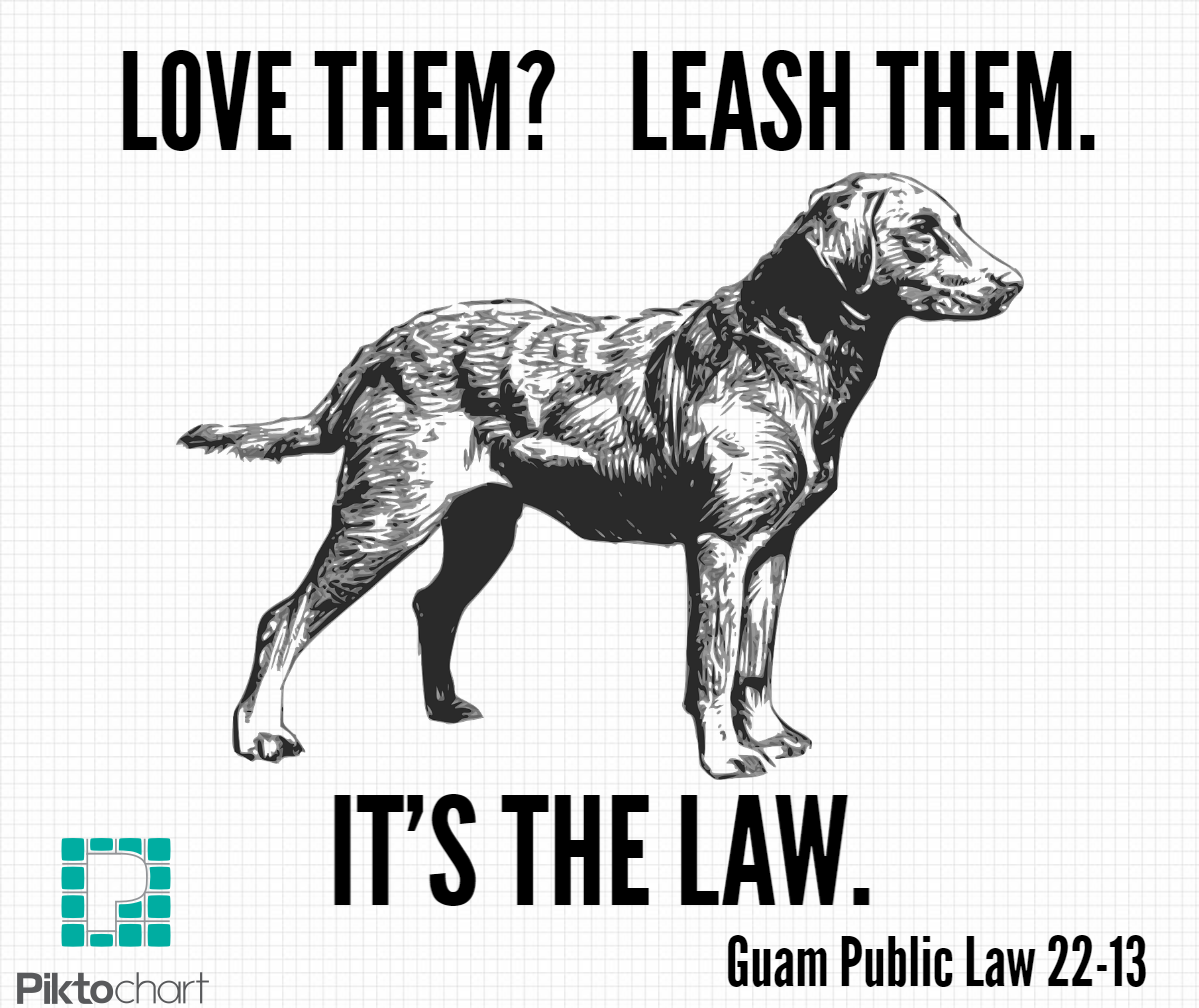
In the law in § 34102 it states that all owned pets above the age of three months are required to have pet licenses for their animals and a violation is punishable by law.
More importantly the law also talks about the leash law, which requires pet owners to restrain their animals by a leash or within a confined area in their property.
Mayor Savares says that the way Dededo deals with the problem is by passing out notices to residents about this law. She then advices residents to tie up their animals, because she works with the Department of Agriculture’s Animal Control officers to round up strays.
The overreaching solution being that before we are able to solve the stray population on Guam we must first enforce the laws we already have. Spay and neutering alone is not a solution, pet owners must be informed of the requirements of taking care of animals and maybe then we will be able to see the differences on Guam.
For information regarding the plan or general information about your pets, you can contact Dr. Joel Joseph at Wise Owl Animal Care at (671) 646-2273 or via email at info@wiseowl.net . You can also visit their website at www.wiseowl.net .
For information how to adopt an animal at their shelter or other basic information, you can contact Alison Hadley at Guam Animals In Need at (671) 653-4246 or via email at info@guamanimals.org . You can also visit their website at https://guamanimals.org.

